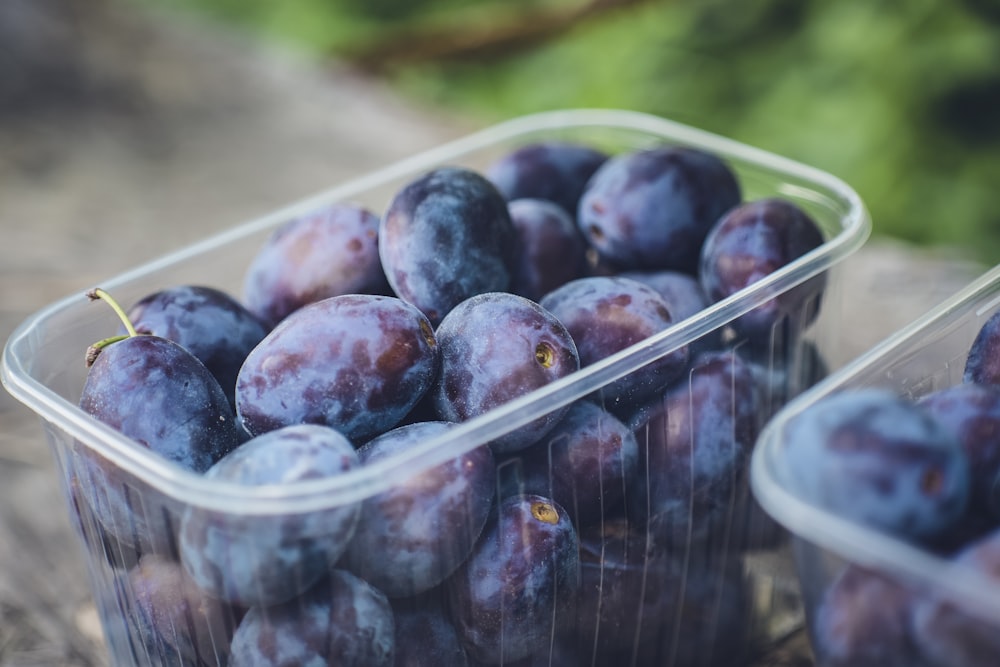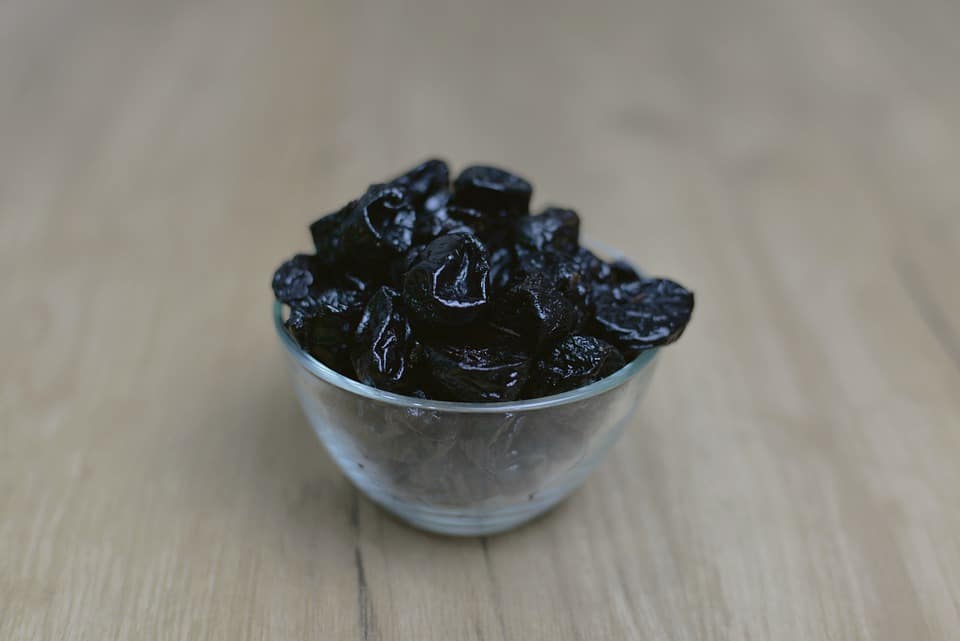Updated on November 11th, 2022
If you wonder what prunes taste like, you’ve come to the right place. Prunes come in different flavors. While some have a pronounced sweetness, others are mild and resemble molasses. These dried plums are sweet and chewy and can temper the acidity in other dishes. The most common type of prune is the European plum. To prepare them, the stone is removed, and the fruit is then dried. A healthy snack, prunes can help aid digestion and contain high levels of fiber and sorbitol.
Prunes can be found in most grocery stores. They are most commonly sold in the snack and baking aisle. They are typically sold in canisters and plastic packaging that weigh nine to 18 ounces. You can also purchase them in bulk, and you can even buy them by the pound. For best results, choose plump, soft, and mold-free prunes. They should be ripe and have no mold.
What are Prunes?
Prunes come from freestone European plum trees, which means the pit is easier to remove than fresh plums or clingstone. The La Petite d’Agen plum, which was brought to California from France in 1856 by French horticulturist Louis Pellier, is used to make most prunes. Pellier’s French plum tree, which was initially grafted to an American plum tree, supplies nearly all of the American prune crop. Today, it’s known as the Improved French plum. One pound of prunes requires up to three pounds of fresh plums.
The prune industry attempted for a few years to use the terms “plum raisins” or “dried plums.” Because the fruit has long been associated with older populations for digestive reasons, the goal was to appeal to a younger audience. That initiative failed miserably, and the California prune industry now proudly refers to them as prunes.
What Does Prunes Taste Like?
Prunes are extremely sweet, and even though they are dried plums, they do not always have the plum flavor that many people associate with fresh fruit.
Prunes can have a variety of flavors depending on the type of plum used, ranging from intensely sweet to mildly sweet, so it’s essential to taste one before using it in a recipe.
Some prunes have brown sugar or molasses-like sweetness to them. In desserts and other recipes, these prunes can easily replace traditional sweeteners.
Prunes with a less sweet flavor will have a honey flavor, which is much milder and can be understated. The sweetness of prunes varies, and some are very sweet, while others are merely mild. You’ll probably enjoy a softer, more tender version if you have a softer, more tender version.
Are Prunes Bitter or Non-Bitter?
The great thing about prunes is that while the skin of fresh plums can be bitter when they are dried, the skin loses its bitterness. This means that prunes are generally sweeter than fresh plums and will not have the bitter taste that some people dislike.
The prune’s sweetness makes it ideal for use in various desserts or to balance out the acidity of other dishes. Furthermore, because they are not bitter, most people can eat them on their own without experiencing a bitter or unpleasant flavor.
Is the Flavour of Prunes and Raisins the Same?
Prunes and raisins have a similar flavor. Raisins are technically dried grapes, while prunes are dried plums (dried Thompson seedless grapes, to be exact.) On the other hand, Prunes have a higher sugar content than raisins, making them taste sweeter. As a result, you can use prunes instead of raisins in most recipes and get a similar result.
Furthermore, except for the total sugar content, these two dried fruits are very similar in almost every way. When you bite into a raisin, your tongue will detect sweetness and a hint of tartness. The first taste of a prune is sweet, followed by a burst of sourness.
Fructose is the sugar found in prunes, while glucose is the sugar found in grapes. Fructose aids in the processing of carbohydrates by the liver aids in removes toxins from the body and may help prevent dental cavities. The rapid rise in blood sugar caused by glucose depletes beneficial nutrients and proteins, and fructose, unlike glucose, does not do this.
Dates vs. Prunes
They have distinct flavors and various textures, and they’re widely used in various settings. Dates and prunes are two fruits that have a lot of similarities in terms of nutrition. Here are some important dates and prunes facts to remember:
Dates are one of the most popular fruits in the United States. Dates are versatile, tasty, and a good source of many vitamins, making them one of the oldest human foods. On the other hand, prunes are a fruit that is frequently mistaken for dates.
A prune is a fruit with a fleshy, seedless core that is dried, packaged, and sold as prunes. Although the dried plum resembles a date, it is much larger than those found in modern diets.
They come in a variety of sizes and colors. The nutrition and benefits they both provide, however, remain the same. Both fruits are good for our health because of their fiber and antioxidant properties. Dates are high in nutrients, but they also contain a lot of sugar and vitamins that have been treated during the manufacturing process.
On the other hand, prunes hold more water than dates and avoid being sweeter to absorb more water. Compared to the sweetness of the date, it is thus easier to chew.
Do Prunes Give you Gas?
Prunes are high in dietary fiber, where it’s widely assumed they cause gas. Like all good stories, this story is exaggerated, and prunes are no more likely than any other high-fiber food to cause gas.
The myth that prunes cause gas has persisted for many years, even though prunes are high in fiber and thus considered healthy. The origin of the myth can be traced back to a laxative product advertisement in which one of the selling points was that prunes are high in fiber.
On the other hand, Prunes can cause gas in some people, but it is usually not unpleasant. FODMAPs are a type of sugar found in prunes (Fermentable Oligosaccharides, Disaccharides, Monosaccharides, and Polyols). FODMAPs are poorly absorbed in the gut, and some people lack the enzymes necessary to break them down. This is the source of gas.
Are Prunes Stool Softener or Laxative?
Prunes can have a variety of digestive effects. They help keep bowels moving because they are high in fiber. As a result, they’re classified as a laxative. They’re also high in potassium, which helps relax the intestinal muscles, making it easier for stool to pass. Yes, prunes can cause a bowel movement while also softening the stool already present in the gut.
Furthermore, prunes are an essential health food because they aid in preventing constipation and the loosening of a stool that is too tight or won’t pass completely through the colon. Prunes contain vitamin A (Retinol Palmitate), which increases the motility of the intestines and acts as a mild stimulant. This makes them useful as stool softeners and constipation relievers for some people.
They’re also good for your heart, have anti-cancer properties, and contain potassium, good for digestion. If desired, prunes can be taken at least once a day, or prune juice can be consumed daily to improve bowel function.
Do Dried Prunes have a Shelf Life?
Prunes’ high natural sugar content makes them excellent for reducing stomach acidity. Due to their high fiber content and the fact that they are dried, dried prunes are also easy to digest. They do not spoil like regular fruits and vegetables, but they may lose some of their flavors over time, and other components such as oils may oxidize, altering their appearance and taste.
It also depends on how recently the dried prunes were harvested. Prunes have a low acid content and can last for months in the pantry. Cut prunes left out at room temperature, on the other hand, may only last a few days before becoming soft and going bad.
However, to extend the shelf life of your dried prunes, make sure they are of good quality and that they are stored and eaten correctly. Dried prunes are a fruit that will spoil quickly if not stored correctly.
The dried prunes could last up to ten years on the shelf if processed in a vacuum-packed bag with an oxygen absorber or in an oxygen-free environment. However, they will rot faster because these prunes have been exposed to air before reaching the shelves. After opening the package, store them at room temperature in an airtight container.
Conclusion
Aside from their sweet taste, prunes have many other benefits. They are high in potassium, and they are often used in baking and can also be added to drinks. Aside from their delicious flavor, prunes can be a healthy snack. For example, if you’re trying to lose weight, you can use prune juice as a substitute for raisins, giving you a great-tasting, healthy treat.
In addition to their health benefits, prunes also have several health benefits. They contain a lot of potassium, iron, and folic acid. In addition to these, they’re rich in fiber and good magnesium and folic acid sources. But remember that consuming too much of them can cause gastrointestinal distress. When you’re eating prunes, consult your doctor to ensure that you’re getting the right amount for your needs.


